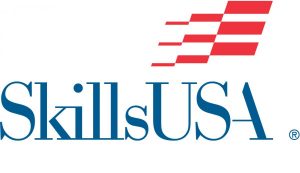Career readiness can be achieved through statewide systems change — but it will take a unified effort from national partners working together to achieve that vision. That, at least, was my takeaway from Monday’s “Career Readiness in K-12 and Beyond†meeting hosted by the Council of Chief State School Officers (CCSSO) at the National Guard Memorial Museum in Washington, DC.
The meeting brought together nearly forty partners representing non-profit organizations, foundations, government agencies, think tanks and companies to raise awareness about ongoing initiatives and to coalesce around a shared vision. With numerous efforts already underway at the national, state and local levels, I could feel the energy in the room around the subject of career readiness.
Former Kentucky Commissioner of Education Terry Holliday kicked the meeting off by sharing the background of CCSSO’s Career Readiness Task Force. The task force launched in 2014 when Holliday was president of CCSSO, and in which Advance CTE’s Kimberly Green participated along with a number of State CTE Directors.  The task force released a report, titled “Opportunities and Options: Making Career Preparation Work for Students,†with recommendations for states to transform their career readiness systems. Currently, CCSSO — along with Advance CTE and Education Strategy Group, with funding from JPMorgan Chase & Co. — is leading the  New Skills for Youth initiative to implement the task force’s recommendations in 24 states and D.C. We recently launched the Learning that Works Resource Center in support of the initiative, and if you haven’t visited the Resource Center yet, I highly recommend doing so.
The meeting quickly jumped from national to state and local efforts. For me, the most impactful part of the event was when Ghafoor Siddique, an Aerospace Instructor from Sno Isle Tech in Washington, spoke about developing an aerospace program for high school students. Siddique had been working for Boeing doing commercial flight tests when he was recruited by Sno Isle Tech. The program relies on the Core Plus curriculum, which was developed by the Washington State Office of the Superintendent for Public Instruction, the Boeing Company, the Manufacturing Industrial Council of Seattle and other companies. The curriculum uses industry-validated knowledge, skills and abilities to help students develop technical skills related to a particular career field.
Siddique also told us how, with support from his students, he launched an in-house aircraft maintenance company that services private planes, using profits to buy equipment for the class. This allows students to learn hands-on how to build and repair aircraft, while simultaneously allowing the school to sustain the aerospace program despite potentially prohibitive equipment costs. In the first few years since the program was launched, Siddique reported that several of his students had gone on to work for Boeing. The company, one of the largest global aircraft manufacturers, is based in Seattle, Washington.
Such programs are part of the reason why there is growing enthusiasm across the states for career readiness. That enthusiasm was clearly present among the attendees at Monday’s meeting. In between panels, we had the opportunity to share our own work and identify opportunities to collaborate with one another. We learned about efforts ranging from developing apprenticeship programs to encouraging adoption of industry credentials, each in support of the larger goal of improving career readiness for tomorrow’s workers.
Next month, states in the New Skills for Youth initiative will gather in Washington, DC to share their progress and outline their plans to transform career readiness systems back home. While only ten states will qualify for the next round of funding, many will follow through on their action plans, recognizing the need and importance of an educational system that prepares students for the workforce. Such aspirations are the reason why classes like Siddique’s can succeed.
Austin Estes, Policy Associate


 In the nine months since President Obama signed the Every Student Succeeds Act (ESSA) into law last December, states and policymakers have been hard at work digging through the legislation and deciding how to structure their new plans. ESSA, which reauthorized the Elementary and Secondary Education Act, presents a number of opportunities to expand access to high-quality Career Technical Education (CTE). As states prepare to implement the law next year, we will provide periodic updates on their progress and share strategies for leveraging ESSA to support CTE at the state level.
In the nine months since President Obama signed the Every Student Succeeds Act (ESSA) into law last December, states and policymakers have been hard at work digging through the legislation and deciding how to structure their new plans. ESSA, which reauthorized the Elementary and Secondary Education Act, presents a number of opportunities to expand access to high-quality Career Technical Education (CTE). As states prepare to implement the law next year, we will provide periodic updates on their progress and share strategies for leveraging ESSA to support CTE at the state level. A
A 
 This post is written by by Tim Lawrence, Executive Director, SkillsUSA, a supporter of Putting Learner Success First: A Shared Vision for the Future of CTE.
This post is written by by Tim Lawrence, Executive Director, SkillsUSA, a supporter of Putting Learner Success First: A Shared Vision for the Future of CTE. 